Intract or Galxe — don’t ask me

There isn’t an ecosystem that has figured out GTM and UGC as good as the crypto community. The ecosystem has hacked the MVC strategy so well there are now systems that streamline these approach.
To initiate our exploration into how the crypto community has masterfully adapted Go-To-Market (GTM) and User-Generated Content (UGC) strategies, let’s define these essential concepts and their importance in the rapidly evolving crypto ecosystem.
Go-To-Market (GTM) strategies in the crypto world involve launching and promoting blockchain projects or cryptocurrencies to a targeted audience. These strategies are pivotal for achieving early adoption and fostering community growth around new crypto projects. User-Generated Content (UGC), on the other hand, encompasses all forms of content—like videos, blogs, and social media posts—created by users rather than the project team itself. UGC is crucial for building trust, spreading knowledge, and encouraging engagement within the community.
A unique aspect of the crypto community’s approach is the adoption of the Minimum Viable Community (MVC) strategy. This concept emphasizes the importance of cultivating a dedicated and active user base from the outset. Unlike traditional markets, where the product often precedes the community, in crypto, a passionate community can be the bedrock on which a project is built and scaled.
The adoption of smart contracts on blockchain platforms eliminates intermediaries in transactions and interactions, offering a transparent and efficient way to engage the community. Through clearly defined rules encoded in smart contracts, participants can directly contribute to and benefit from community quests and projects, with outcomes automatically executed and verified on the blockchain.
The beauty about this over any other ecosystem is that on the blockchain everything is a contract, so there are no intermediaries involved when engaging in community quests. With the rules of the quest clearly defined, any individual can choose to participate and let the outcomes be decided by the execution of a smart contract.
Galxe’s evolution for me has been the most interesting because I’ve followed their journey from what used to be know as Galaxy ECO to Galxe.
Whats beautiful about it, is that they followed the market and did what users wanted. trying to understand how crypto users work has been crazy. however there has been a couple interesting bits around it. And the results from the market has been nothing short of amazing as far as the numbers are concerned.
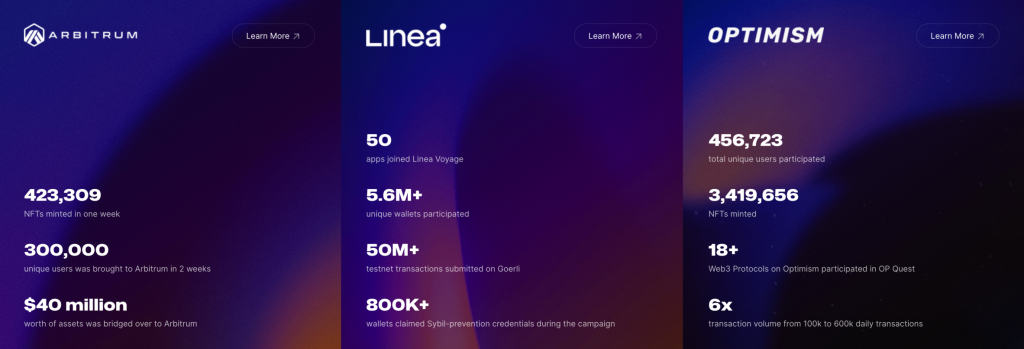
in particular I noticed the Galxe passport is still built on-top of their protocol and somehow they’ve managed to engineer one of the most complex identity systems that look simple on the outside and to anyone would be a mere passport.
However every quest, bounty and on-boarding you complete is actually a verifiable token. Like a certificate. When I an lotanna were working on daccred they were one of the competitors to look out for. However my attention has been drawn to a new platform called intract that seems to be a competitor to the version of galaxy that is now known as Galxe.
So as a product nerd I decided to do a little investigation. The following below is just me looking at the components of their User experience, annotating it and making notes about it. So let’s begin
I believe intract is short for interact and galxe is short for galaxy, although I am not surprised as crypto bros tend to have a thing for re-arranging the alphabets for known words. “gm, buidl, ngmi” comes to mind and trust me it could get worse.
I just realized I didn’t export these images as high quality files. so I will have to re-export all of them again 🙁
Brand Spaces
Everything starts with a brand space

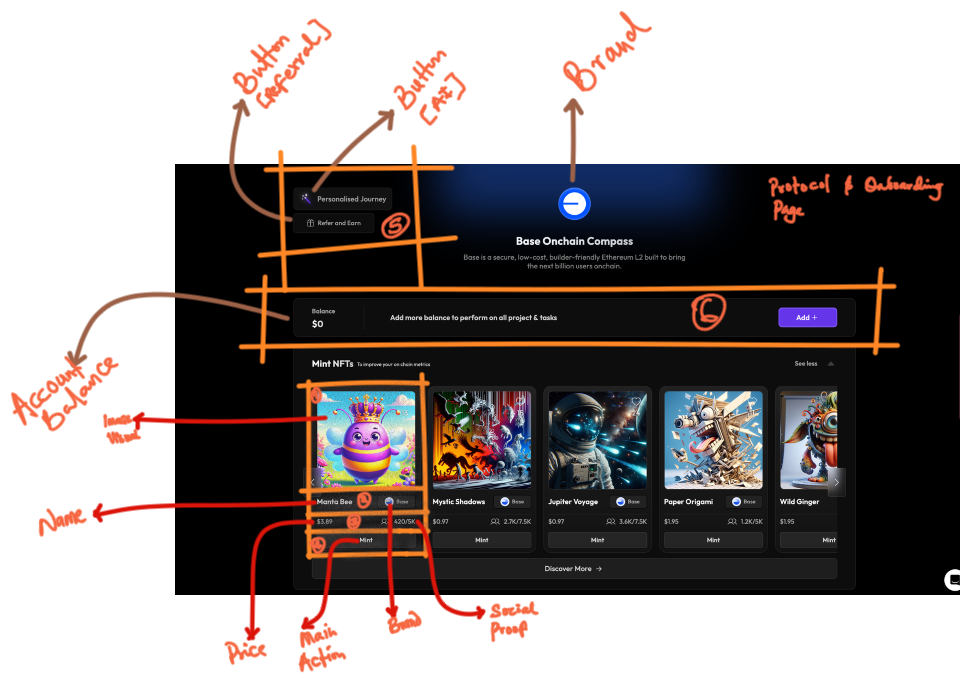
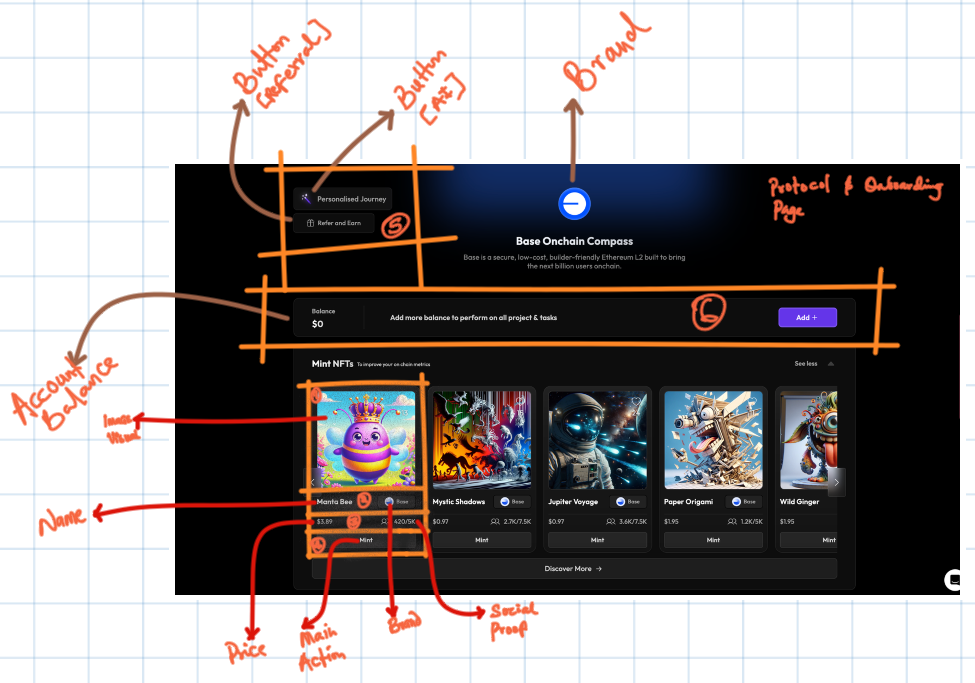
Curator Spaces
Curators are like treasure hunts, but as a cluster of various tasks that match a theme. like mint your first nft theme. or register your first blockchain address “.ens / .stark / .zksync” etc

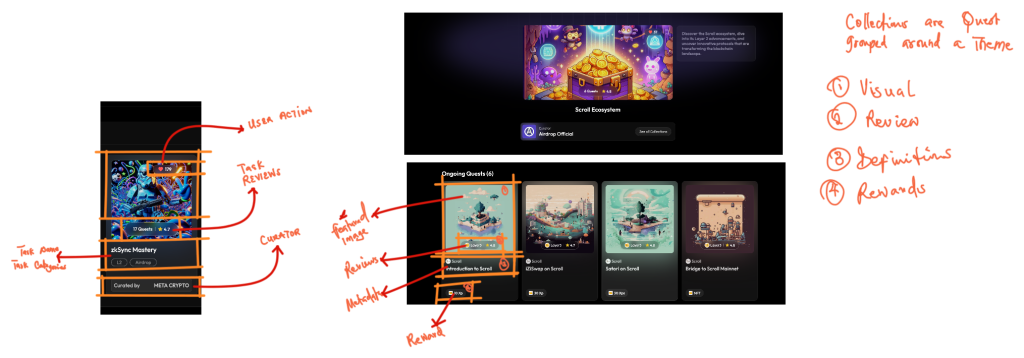
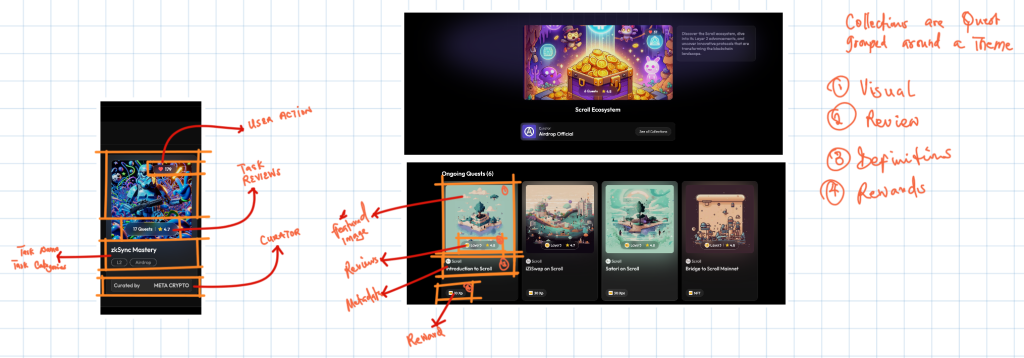
First time users (Explore)
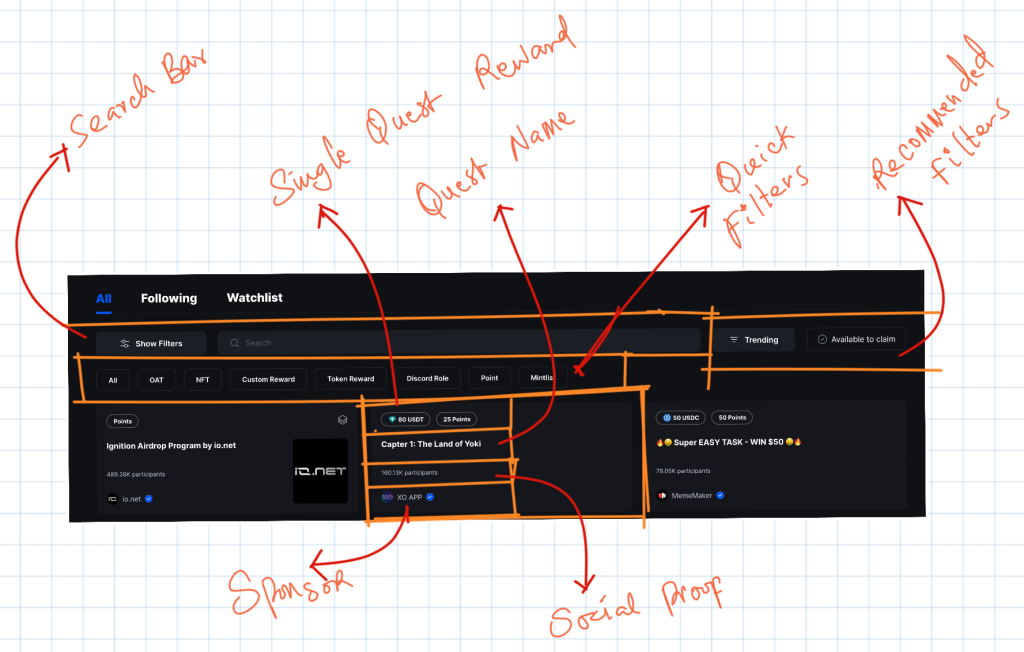

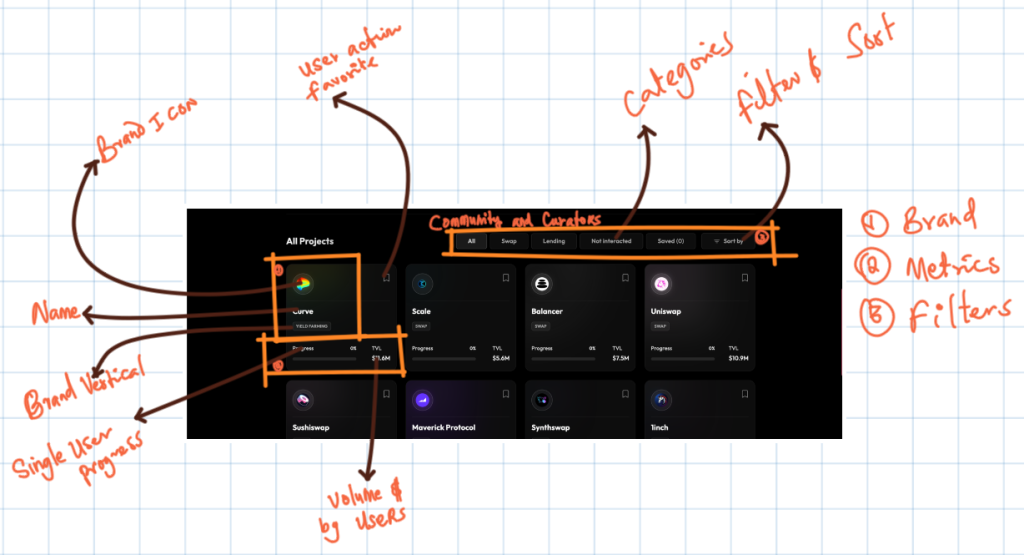
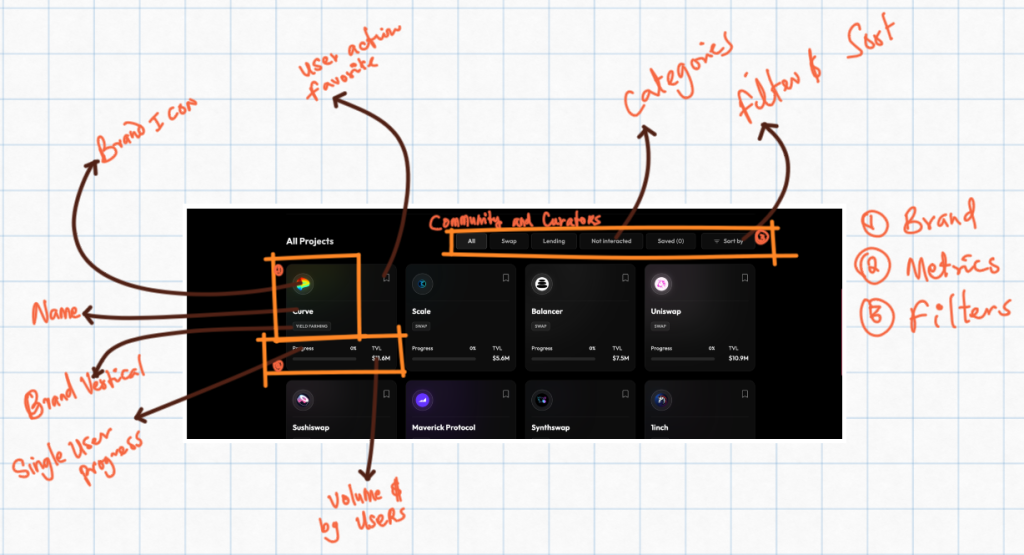
Trending
How do we show you what we like, or something we’ve been paid to promote
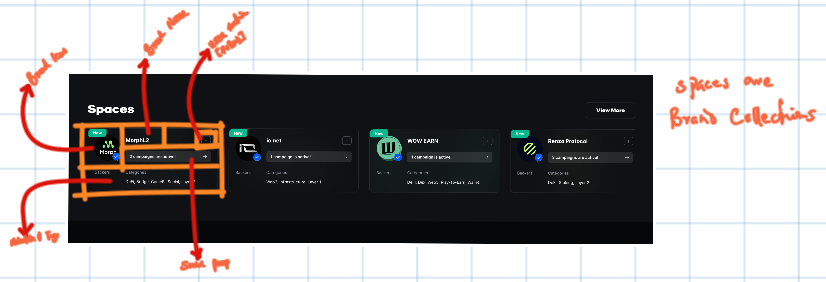
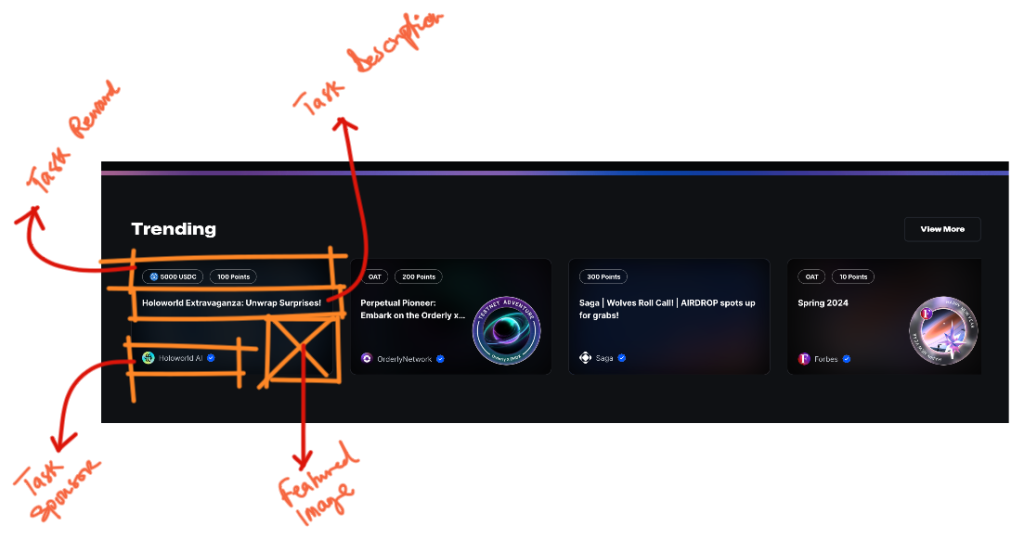
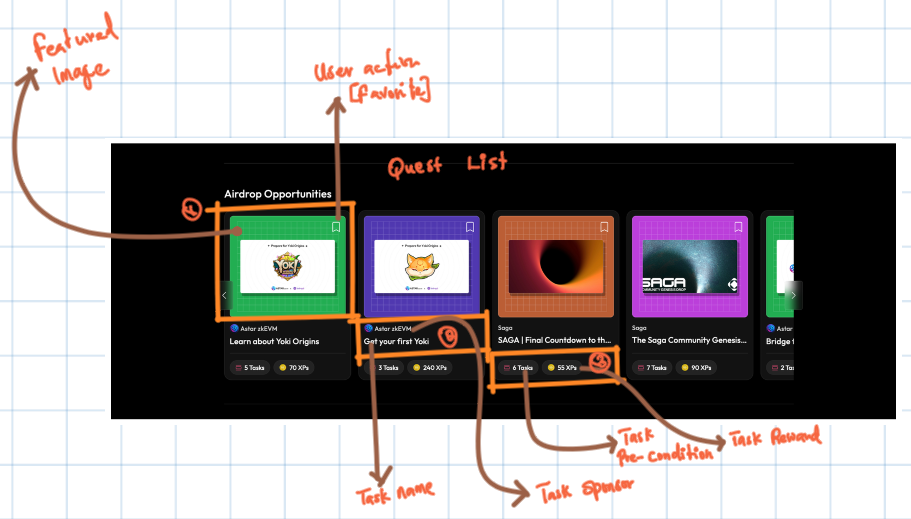
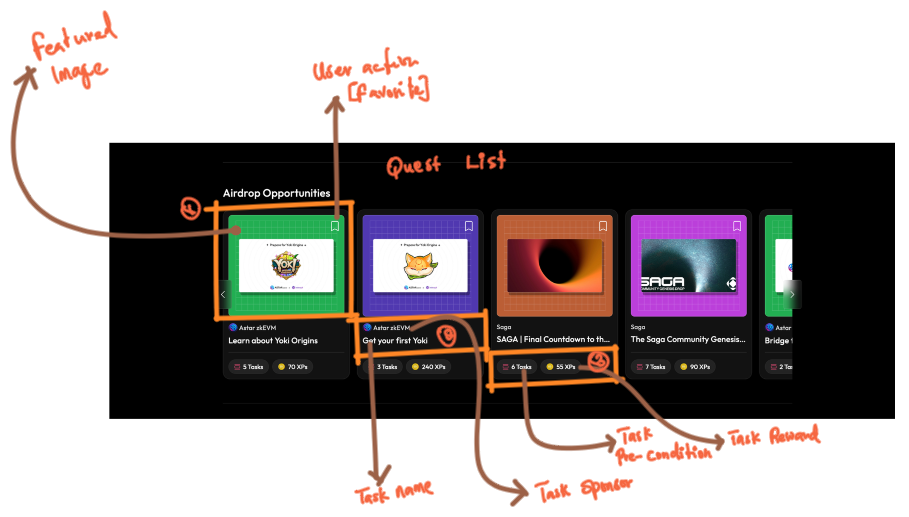

Tasklists
When you are interested in a Quest, how do we present the list of tasks you need to complete or partake in to be eligible for prize.

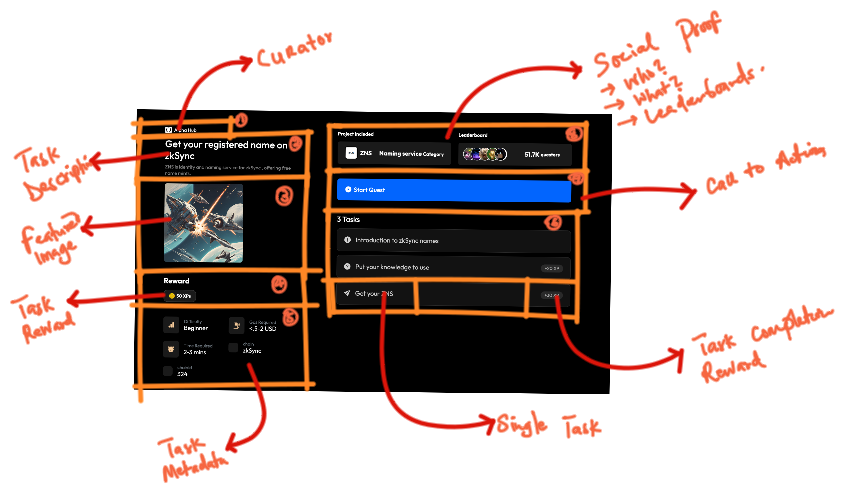
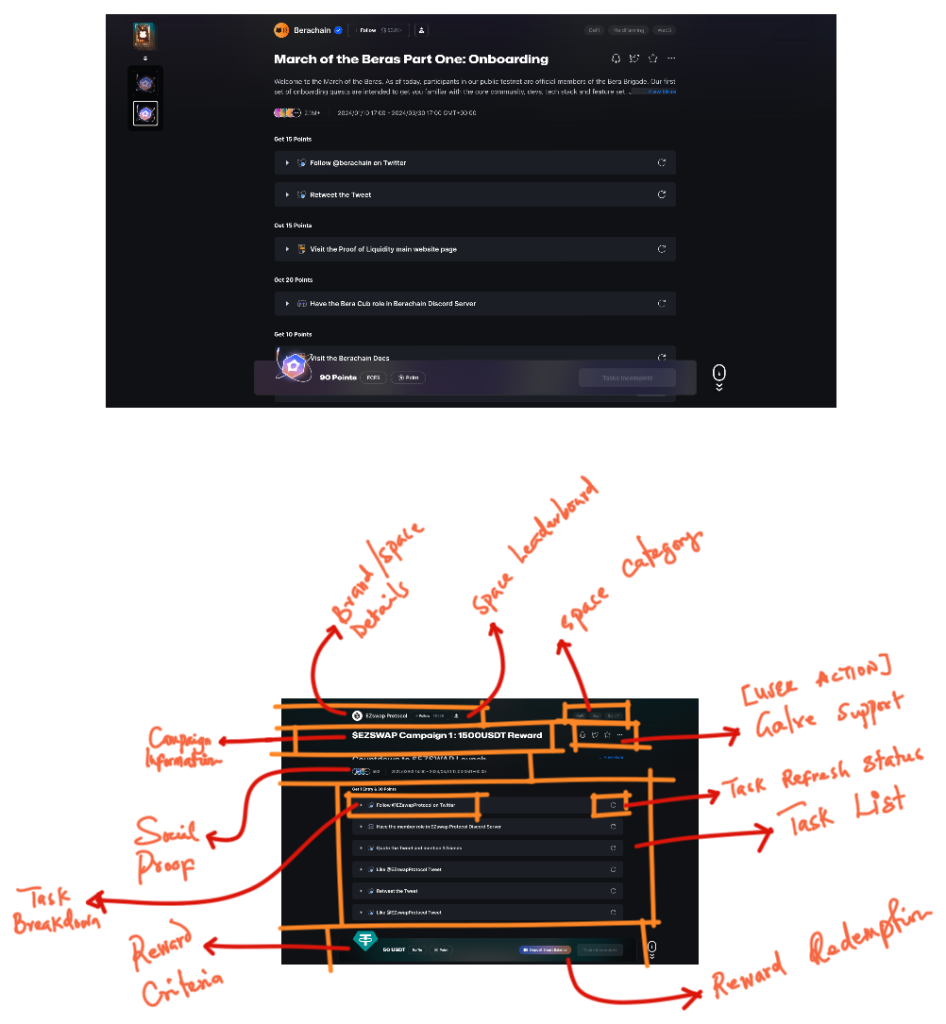

Recommendations
When you finally explore a task, the next thing that happens is you get a recommendation.


Wild Thoughts
If you’ve read up to this point, it might be best to return later, as the writing that follows is somewhat inconsistent and disconnected.
Presentation of Tasks
When it comes to presenting the actual task the user is expected to be performed, I find that intract has some level of sophistication to the presentation of tasks. There is a wide variety of task components to pick from. From forms, slides, external links and even captchas. However Galxe seems to be very blockchain-ey about theirs.
From the task presentation page you can tell how Galxe is quite close to the credential verification side of things, where every activity is actually designed to be a verifiable activity on-chain with a schema for verifying completion.
One seems systematic while the other feels user-centric, but if there is anything I’ve learnt, when you make it easy and delightful for the user, it comes at a cost, and while Galxe strategy means that they can scale their system across any use-case without compromising, intract will have to figure our various ways to make the actual customers “businesses” that pay for these spaces and publication happy while fitting in their requirements into their app.
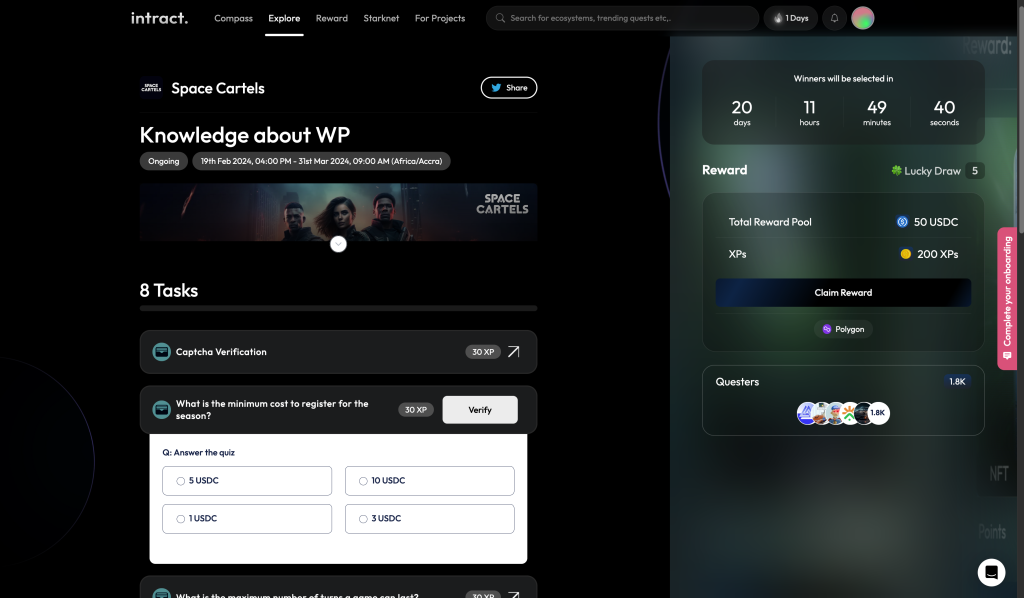
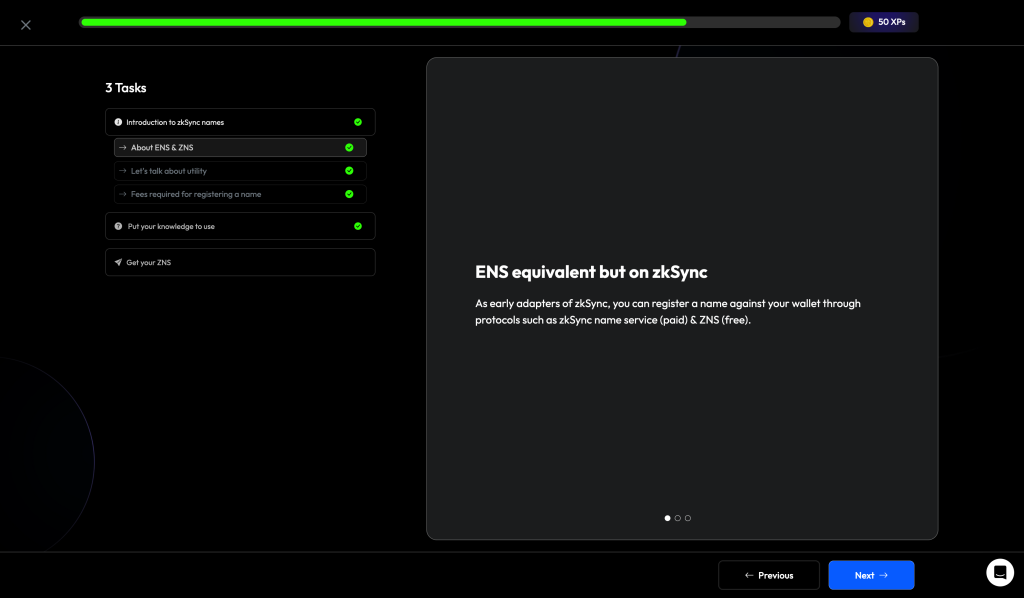
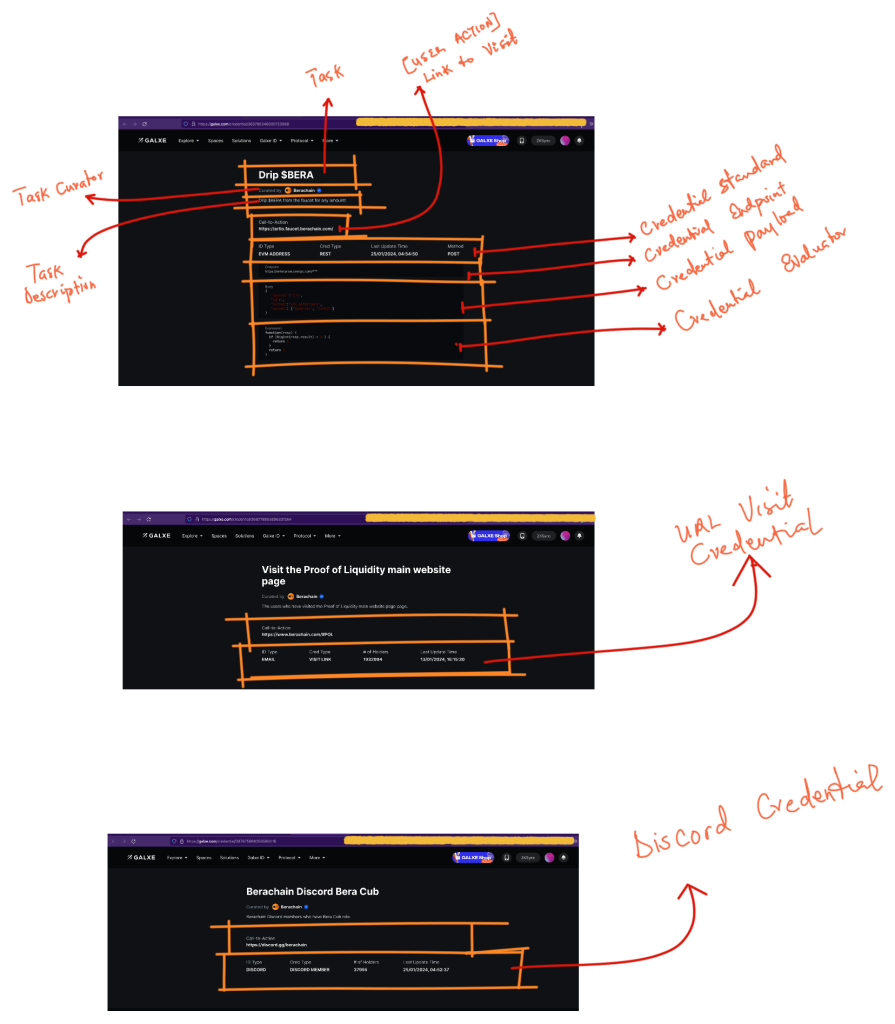

Everything I write here would not have some opacity to reflect it’s draft only nature
